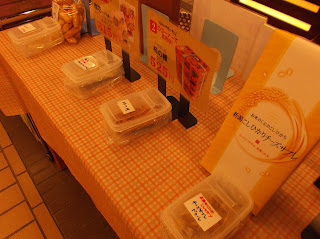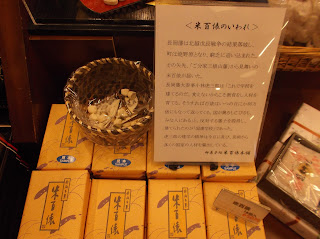I waited for ten minutes or so until the bus arrived.
バスが来るまで10分ほど待ちました。
Retro (classic) bus whose nickname is Neko Bus (Cat Bus) because of its rememblance to the Neko Bus in an anime movie.
レトロバスです。あだ名は猫バス。アニメ映画に出てくる猫バスに似ているからです。
It was only a five-minute ride.
乗っている時間はたった5分でした。
Every year, Hana Matsuri (lit. Flower Festival) is held on April 29 in Yuzawa Chuo Koen (Yuzawa Central Park).
毎年、湯沢中央公園で4月29日に花まつりが開催されます。
My family used to go to this festival when my children were smaller, as I described here. This is where fish catching is to be held.
ここで述べたように、子供たちが小さい頃は、この祭りによく行ってました。ここが魚つかみが行われるところです。
There was still some snow left on the ground.
地面にはまだ少し雪が残っていました。
With no children to attend to, I really had nothing to do on the site of the festival. I soon returned to Yuzawa Station, walked about the town, went to Gangi Dori again, and returned home.
世話をする子供もいなくて、祭りの会場ですることもほんとに全然なかったので、すぐに湯沢駅に戻りました。町を歩き回り、がんぎどおりにまた行き、そして帰宅しました。
My purchases:
私が買った物:
I asked my wife to prepare the soba for supper. Just I had expected, the soba was very good. It was greenish just like good hegi soba should be. The photo below does not justify the color.
このそばを夕飯に出すよう妻に頼みました。予想通り、とてもおいしいそばでした。へぎそばは、緑がっかた色をしてないといけません。下の写真ではその色がよく出てませんが。
My wife also made kakiage and mame ten (soy bean tempura).
妻は、かき揚げと豆天も作りました。
My wife and I had the sparkling sake. Sweet and good as an appetizer.
妻と私はスパークリングのお酒を飲みました。甘くて、食前酒として最適です。
Edited to add: I tasted the Shoyu no Mi this morning. Sadly, it did not live up to my expectations. I have to get the real one!
追記: 今朝、しょう油の実を食べてみました。残念ながら、期待通りではなかったです。本物を買わないと!
追記: 今朝、しょう油の実を食べてみました。残念ながら、期待通りではなかったです。本物を買わないと!

































































